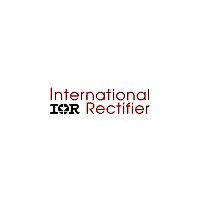IRPLHALO1E International Rectifier, IRPLHALO1E Datasheet - Page 5

IRPLHALO1E
Manufacturer Part Number
IRPLHALO1E
Description
KIT HALOGIN CONVERTER 100VA
Manufacturer
International Rectifier
Datasheet
1.IRPLHALO1E.pdf
(17 pages)
Specifications of IRPLHALO1E
Main Purpose
Lighting, Ballast Control
Utilized Ic / Part
IR2161
Lead Free Status / RoHS Status
Lead free / RoHS non-compliant
Secondary Attributes
-
Embedded
-
Primary Attributes
-
Other names
*IRPLHALO1E
IRPLHALO1E
nected to two diodes, DCP1 and DCP2, feeds current back from the half bridge (VS) to VCC and
sustains the supply to the IC after it has been initially started. This arrangement avoids the neces-
sity for RS to supply all the current to VCC, which would require RS to dissipate around 2W in a
220VAC supplied system. This is undesirable as 2W power dissipated as heat within the convertor
adds significantly to the temperature rise. When selecting the value of RS, the trade-off is between
power dissipation and the ability of the convertor to start up when connected to a dimmer that is set
to a very low level. When a dimmer is set close to minimum and the supply to the convertor is
switched on, only a small voltage will appear on the DC bus and so RS must be small enough for
this to provide sufficient starting current for VCC. However the smaller the value of RS is, the more
power it will dissipate. It should be noted that the above considerations are important in a 220VAC
supplied system, but in a 120VAC supplied system a charge pump would not be necessary and RS
could supply VCC without dissipating significant power. Other considerations such as the high
primary current become more problematic in a 120VAC system.
An external 16V zener diode DZ has been added to avoid the need for the internal zener to dissi-
pate power (it should be rated at 1.3W). The resistor RD in series with CD is necessary if the
convertor is required to operate from a triac based (leading edge) phase cut dimmer. When the triac
fires at a point during the mains half-cycle the high dv/dt allows a large current to flow through this
path to rapidly charge CVCC to the maximum VCC voltage. In this way each line half cycle, the
system will receive a fast pull up on VCC when the traic in the dimmer is fired.
The external zener DZ will prevent possible damage to the IC by shunting excess current to COM.
Once the capacitor voltage on VCC reaches the start-up threshold the IC turns on and HO and LO
begin to oscillate. A bootstrap diode (DB) and supply capacitor (CB) comprise the supply voltage for
the high side driver circuitry. To guarantee that the high-side supply is charged up before the first
pulse on pin HO, the first pulse from the output drivers comes from the LO pin. During under voltage
lock-out mode, the high and low-side driver outputs HO and LO are both low.
Soft Start Operation
The soft start mode is defined as the state the IC is in at switch on of the system when the lamp
filament is cold. As with any type of filament lamp the Dichroic Halogen lamp has a positive tem-
perature coefficient of resistance such that the cold resistance (at switch on when the lamp has
been off long enough to cool) is much lower than the hot resistance when the lamp is running. This
normally results in a high inrush current occurring at switch on. Under worst-case conditions this
could potentially trigger the shut down circuit. To overcome this problem the IR2161 incorporates
the soft start function.
When the IC starts oscillating the frequency is initially very high (about 125kHz). This causes the
output voltage of the convertor to be lower since the HF transformer in the system has a fixed
primary leakage inductance that will present a higher impedance at higher frequency allowing less
www.irf.com
5











